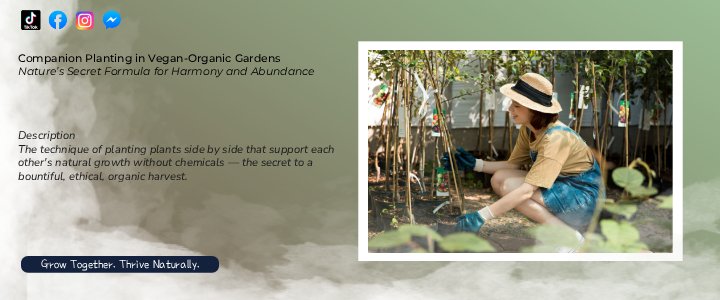Understanding Vegan Agriculture
Vegan Agriculture is often misunderstood, especially by those familiar with traditional organic or conventional farming. Because it avoids all animal inputs such as manure, bone meal, or fish emulsion, many people assume it is impractical or less effective. However, these ideas are often based on misconceptions rather than facts.
By taking a closer look at common myths, we can better understand how Vegan Agriculture works, why it matters, and how it contributes to sustainable food systems in both Europe and North America.
Misconception
1. Plants Can’t Grow Without Manure
One of the most widespread myths about Vegan Agriculture is the belief that plants need manure to grow. In reality, plants require nutrients such as nitrogen, phosphorus, and potassium, which can be supplied through non-animal sources.
- Plant-Based Fertility Solutions
- Compost made from leaves, grass, and food scraps.
- Green manure crops like clover and alfalfa.
- Mineral sources such as rock phosphate or seaweed.
These methods have been tested and proven to maintain healthy soil and high yields without relying on animal waste.
2. Vegan Agriculture Is Less Productive
Some argue that Vegan Agriculture cannot produce enough food to feed growing populations. Yet research and real-world examples show otherwise. By using practices like crop rotation, mulching, and biodiversity, vegan-organic farms maintain soil fertility and prevent pests naturally.
In Europe, stockfree organic farms have shown that yields can be competitive with traditional organic methods. In North America, community-supported agriculture programs are beginning to showcase similar results
3. It’s Only for Vegans
Another misunderstanding is that Vegan Agriculture is designed exclusively for vegans. While the philosophy does align with vegan ethics, its benefits go far beyond lifestyle choices.
Broader Benefits Include:
- Lower greenhouse gas emissions by avoiding livestock-based inputs.
- Reduced risk of pathogens linked to animal waste.
- Stronger biodiversity through plant-based soil management.
These advantages appeal to anyone concerned about climate change, sustainability, and food safety, not just those who follow a vegan diet.
4. Vegan Agriculture Ignores Soil Health
Some critics assume that without manure, soil will lose its fertility over time. The opposite is true. Vegan Agriculture emphasizes soil health by promoting long-term practices such as cover cropping, composting, and reduced tillage.
| Soil Challenge | Vegan Agriculture Solution |
|---|---|
| Nutrient depletion | Crop rotation with legumes |
| Soil erosion | Mulching and cover crops |
| Loss of biodiversity | Companion planting |
By focusing on these strategies, Vegan Agriculture protects soil for future generations.
5. It’s Not Scalable
Skeptics often say that Vegan Agriculture can only work in small gardens, not large-scale farms. However, examples in both Europe and North America show that veganic systems can be applied to a variety of scales. From urban gardens in Toronto to certified stockfree farms in the UK, Vegan Agriculture is proving adaptable and scalable.
To appreciate where these ideas come from, explore the origins in our article: The History of Vegan-Organic Farming in Europe and North America.
Vegan Agriculture challenges long-held assumptions about farming by proving that plants can thrive without animal inputs, yields can remain strong, and soil health can even improve. Far from being a niche approach, it offers practical solutions for sustainability, climate action, and ethical food systems.
As more people explore this method, it’s worth asking: are our assumptions about farming rooted in tradition, or in evidence? The history and results of Vegan Agriculture suggest it’s time to rethink old myths and consider how plant-based farming can play a larger role in the future of food.



